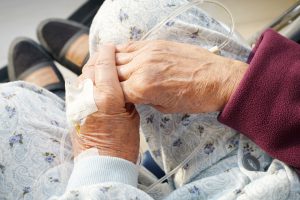Japan’s New Year’s celebrations were cut short by a deadly earthquake that affected the Noto Peninsula in Ishikawa Prefecture. More than 230 deaths have been confirmed since the disaster struck the region.
Tragedies like these are an unfortunate part of life within the Japanese archipelago. It is a well-known fact that Japan is a country prone to violent disasters, ranging from earthquakes to tsunamis or typhoons. Imaginaries of violent natural catastrophes have long been found in the country’s folkloric tales, as famously exemplified in the representation of giant catfish (namazu) that cause earthquakes and tsunamis by moving their powerful tail.
Against the occurrence of natural disasters, Japan has developed powerful anti-seismic technologies, becoming one of the leading expert countries in earthquake-proof building. Beyond developing this expertise, disaster prevention is also deeply rooted in the culture of the country. Indeed, children are taught how to react and where to go in the case of an earthquake. This combination of technical savoir-faire and cultural savviness makes Japan one of the international leaders in disaster prevention and mitigation.
However, there is one social problem that is making disaster prevention increasingly difficult for Japanese society: the aging of its population. In recent years, Japan has become the poster child of the third-age society, with the highest percentage of elderly citizens amidst the countries of the world. The rapid aging of the Japanese population is creating many socioeconomic problems that are affecting pension cost, workforce replacement, and stress on medical infrastructure. Yet, this aging also increases the population’s vulnerability to natural disasters, which refers to the capacity of a community to resist the impacts of a disaster.
While elderly people in Japan understand that their country is prone to earthquakes, they might not necessarily have the means to prevent such disasters from impacting them. This is what vulnerability implies. In that regard, the 2024 earthquake, which has taken a heavy toll on Noto Peninsula’s aging population, is a sign of future vulnerabilities to come.
How, exactly, does an elderly population exacerbate vulnerability in times of earthquakes?
First, elderly citizens are part of the segment of the population that are the most drastically impacted by a disaster. Indeed, in the aftermath of the Great East Japan Earthquake and the ensuing tsunami of 2011, more than 56 percent of people who lost their lives were aged 65 and over. Physically speaking, elderly people’s health is often more fragile, which renders them more prone to face more serious injuries in the case of an earthquake.
An aging community equally needs more help and support during evacuation procedures, a step that can increase stress levels, while negatively impacting displaced people’s living conditions or their capacity to recover. The difficult conditions of an evacuation center, such as sleeping on cold floors or getting used to a new environment, are especially harsh for the elderly population and subsequent deaths within the evacuation centers of Noto have been reported.
Second, elderly citizens are sometimes prone to live alone, as well as to be socially isolated. In Japan, the term kodokushi, which translates as “lonely death,” has become an unfortunate phenomenon that demonstrates the increasing reality of this situation. Kodokushi refers to cases of elderly people dying alone, with their bodies being left unattended for extended periods of time.
In Noto, there is a similar culture of “suffering in silence,” which can make vulnerable people less likely to ask for help in the aftermath of disaster, hereby complicating the tasks of rescuers. Japan’s family-based social system has also been criticized for failing to help isolated elderly people. Consequently, post-disaster recovery is impacted by the lack of social ties, upon which elderly citizens are dependent to mitigate the effects of an earthquake.
Lastly, the elderly are likely to be less tech-savvy than other segments of the population and thus susceptible to potentially missed early warnings of natural disasters. For instance, cellular broadcast technology is an important part of disaster mitigation in Japanese society. Often, when a natural disaster is about to strike, citizens receive a warning on their smartphone, with clear indications concerning the measures to take. Japan’s Earthquake Early Warning is a good example of a system that provides prompt alerts just as an earthquake starts. These forms of technology provide crucial seconds to take shelter, hereby potentially saving one’s life. Not possessing access to such technologies can impede proper resilience for an elderly population.
In the end, much has been written about how Japan’s aging population will affect the economy of the country. However, we can see that this phenomenon is impacting all spheres of Japanese society, including disaster mitigation. The 2024 earthquake in Noto Peninsula points toward signs of future problems, forcing policymakers to map the unintended consequences of an aging population in disaster governance.

































